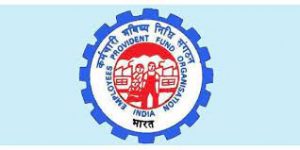Enhancing an organization’s workforce’s abilities involves training and development. It is a procedure that aids in raising worker output and effectiveness. A crucial component of any business is training. Employees not trained for their occupations can gain new abilities with the training. Depending on the needs of the employee or firm, an employee training program can be formal or informal.
What is Employee Training and Development?
Employee Training and Development provides employees with the skills and knowledge to perform their job effectively. It is also improving their competencies, capabilities, and performance.
Employee training and development is a process from recruitment to retirement. There are numerous different ways in which Organizations can implement Employee Training and Development. They can either train existing employees or hire new employees with the necessary skill set. Employee training and development are important for any company. They are essential for the growth of employees to make them more productive.
Need for training and development in an organization
The need for training and development has been growing. It is a way to improve the skills and knowledge of current workers so they can become more productive.
The most popular method of employee development is training. Although there are many different ways to train, they all aim to expand a person’s knowledge and skills to increase production. An attendance tracking software is an excellent example of development in an Organisation.

What is the Importance of Training and Development?
An essential part of any firm is training and development. It aids in skill development and keeps staff members abreast of current developments in their industry.
The training introduces new hires to the organization’s culture, policies, and processes. Training initiatives give staff members a sense of community and offer them chances for personal development. Companies can use training initiatives to keep staff members interested in their work.
Here are 5 Benefits of Employee Training and Development:
1. Improved Employee Performance
Training is an essential factor in improving employee performance. It can be a part of the employee’s onboarding process and ongoing development. Performance monitoring tools help employees with the knowledge and skills they need to succeed in their new roles.
2. Improved Employee Morale
Training can also lead to improved employee morale. Employees are more likely to feel like they are part of a team when they know that their company cares about them enough to invest in their growth. Training can also help employees retain information better because it helps them understand how their role fits into the company.
3. Reduced Turnover
Employee turnover is one of the many serious obstacles that businesses face. It costs an organization a lot in terms of time and money to recruit, hire, and train new employees. Some employees may be unsatisfied with their work, or they may feel like they are not being paid well enough for the work that they do. Training and development promote a worker’s commitment to the company, which lowers the turnover rate.
4. Increased Productivity
Employees are the backbone of any organization. They are the ones who provide the productivity and output that are needed to keep a company running. Financing in their training and development is essential to increasing productivity. Employee database management software can aid in boosting productivity.
5. Enhanced Customer Experience
The “customer experience” refers to how a consumer views and feels about their dealings with your business. Culminating client encounters with business, including their use of your products or services, their dealings with staff members, and their perception of your brand. Research shows that training and development improve customer experience.
Frequently Asked Question (FAQ)
Q1. What is the need for training in HRM?
A. Training improves staff morale by fostering a positive attitude, job satisfaction, and better learning. As people grow in dedication, the organization gains loyalty.
Q2. Why employee training and development is necessary?
A. Training and development help companies gain and retain top talent, increase job satisfaction and morale, improve productivity and earn more profit.
Q3. What does employee training mean?
A. The term “employee training” refers to a set of systematic procedures for teaching employees in a way that improves the work abilities necessary for organizational growth. These skills could be technical, managerial, or professional. Keep in mind that learning and development are not the same as staff training (L&D).






